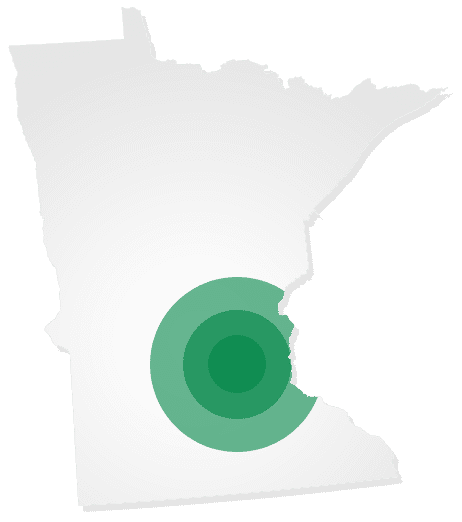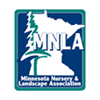Choosing the Best Lawn Fertilizer for Your Yard
Choosing the Best Lawn Fertilizer for Your Yard
Finding the best lawn fertilizer for your yard can be confusing. There are so many options: organic vs. synthetic, liquid vs. granular, and slow-release vs. quick-release. This article will help you narrow the choices down to what is best for your turfgrass.
The Meaning of the Numbers
When you look at any bag of fertilizer, it has three numbers across the front. Those numbers tell you the percentage of Nitrogen, Phosphorus, and Potassium in the bag. If you buy a ten-pound bag, and it says 15-5-10, then you have 1 ½ pound Nitrogen, ½ pound Phosphorous, and 1 pound of Potassium. The rest of the bag is full of fillers to help the fertilizer spread well.
Nitrogen spurs growth and promotes a healthy green color. Phosphorous helps the plant to convert nutrients into growth and helps the plant produce healthy roots. Potassium fosters healthy roots and leaf blades. There is no perfect percentage for all lawns – percentages depend on turfgrass type and your soil fertility.
Get a Soil Test
The only way to know exactly what nutrients your soil has, and what nutrients you need to add, is a soil test. These are usually offered by your state’s land grant university. You can get the soil sample bags and the instructions for filling them from your county extension agent. There is a nominal fee to get the results.
You will need to get two soil bags, one for your front lawn and one for your backyard. In most cases, there is a box to check that will tell the lab what you are trying to grow. In a few weeks (or sooner) you will get the results of your soil test. It will tell you the Nitrogen, Phosphorous, and Potassium levels in each sample. More importantly, it will tell you what amount of those nutrients to add to make your grass grow well and stay healthy.
Check the Soil Temperature
Fertilizers should only be used once the soil temperature reaches 55° F. The soil temperature is different from the air temperature. A soil thermometer can tell you exactly what the soil temperature is, so you won’t have to worry about guessing.
Organic versus Synthetic Fertilizer
When choosing the best lawn fertilizer for your yard there are two types of fertilizer to look for: organic or synthetic.
Organic fertilizer is all-natural. Compost is a type of organic fertilizer. Correctly made compost feeds your lawn the nutrients it needs over time. Compost will not burn your lawn and feeds the soil, not just your grass. Granular organic fertilizers can burn your lawn if not watered inadequately or if you apply more than the label indicates. Organic fertilizer is generally more expensive than synthetic fertilizer. In addition, composted fertilizer is generally more difficult to spread across your lawn.
Synthetic Fertilizer is made from chemicals like byproducts of petroleum combined with other substances. It is cheap and easy to use. However, too much synthetic fertilizer will burn your lawn and can even kill it. It also only feeds the plant, not the soil. Synthetic fertilizers can be formulated for quick-release of nutrients or slow-release of nutrients.
Slow-Release versus Quick-Release Fertilizer
Slow-release fertilizer breaks down over time, so the nutrients are available to your lawn for a longer period of time than quick-release fertilizer. That means you can go longer between fertilizations. However, slow-release fertilizer takes longer to see results. Quick-release fertilizer can quickly feed your lawn the nutrients it needs so it greens up and grows faster. The best lawn fertilizer for your yard contains about half slow-release fertilizer and about half quick-release fertilizer.
Liquid versus Granular Fertilizer
Liquid fertilizer is sprayed using water from your hose. You can buy it already diluted or as a concentrate you put in a spray bottle that attaches to your hose. It can be difficult to spread evenly over your lawn. Liquid fertilizers only contain quick-release nutrients, so you have to spray them more often than granular fertilizers. They are also more expensive than granular fertilizers.
Granular fertilizer is spread by a push or hand-cranked spreader. You set the amount of fertilizer that comes out as you walk by adjusting the opening for it to go through. You walk the width of your lawn turning to fit each row right beside the lawn you have just walked over. After you cover the lawn that way, you walk over it again but in a perpendicular direction. This helps spread the fertilizer evenly and makes sure you don’t miss a patch. These are cheaper than liquid fertilizer and don’t have to be applied as often.
Water Before or After Fertilizer Applications
Never fertilize before a rainstorm. The rain will wash your fertilizer right off your lawn. Not only does this waste your money, but the fertilizer gets washed into lakes and streams and causes algae blooms. Algae blooms take up all the oxygen available in the water and kill the fish and other organisms there.
The fertilizer label will tell you whether to water your lawn before or after the application of fertilizer. Granular fertilizers generally need to be watered in, so the nutrients are released to the plant roots. Some liquid fertilizer goes on best when the lawn has been recently watered. Your label will tell you everything you need to know about applying it so read and follow the label instructions. Remember too much of a good thing can burn and/or kill your lawn.
Best Lawn Fertilizers for Your Yard
Professional Premium Lawn Fertilizers are going to offer you the most ‘bang for your buck.’ Right away, a professional will take the guesswork out of what kind of fertilizer you need and formulate a plan specifically for your lawn. Most services will alternate between a mixture of granular and liquid fertilizers depending on your lawn’s needs and application costs are more affordable than you might think.
Pro Tip: Did you know that it costs more to buy lawn fertilizer than it does to hire All Metro Lawn Services for premium lawn fertilizer and services?
Scotts Turf Builder Lawn Food comes in granular or liquid form. It is a synthetic fertilizer that has an NPK ratio of 26-0-3 in the granular form or 29-0-3 in the liquid form. Because it does not have Phosphorous, it is only good for established lawns. This fertilizer is good for any type of grass and can be used at any time during the growing season. It thickens your grass and can help it choke out any weeds. It also promotes the absorption of nutrients and water. Scotts Turf Builder Lawn Food is only for use on growing grasses, not dormant ones. It also will not kill existent weeds; it only makes it difficult for new ones to grow.
Milorganite Organic Nitrogen Fertilizer is a good organic option. It has an NPK ratio of 5-2-0, so can be used with new lawns. Because it doesn’t have Potassium, it is best used for moderate temperatures and where there is no danger of drought. This fertilizer also has a 4% iron content, which will really green up your grass. It is safe for any grass and can be applied at any time during the growing season. It is safe for use where there are pets and children. This fertilizer can burn the lawn if it is not watered incorrectly.
Get Help with Fertilizing Your Yard
Figuring out what nutrients your lawn needs can be a hassle. Choosing the best lawn fertilizer for your yard and using it can be a hassle. You do not have to go it alone. All Metro Service Companies can apply an even and accurate amount of the right fertilizer for your grass. We have lawn fertilization and weed control program for any lawn. When you contact us, we will come out and do a free inspection of your lawn. Based on the inspection, we will develop a custom fertilizer and weed control program just for your lawn. As an example, here is what our popular five application service would look like.
Late April or Eary May. Once the soil temperature reaches 55F, we come out and apple a balanced slow-release Nitrogen and Potassium (potash) fertilizer with crabgrass prevention and pre and post-emergent herbicide and micro-nutrients. This will green up the lawn and prevent new weeds from growing.
Mid to late May. We use a multi-control herbicide application with an iron boost.
Late June. We apply a balanced slow-release nitrogen and potash fertilizer with micro-nutrients.
Early September. We apply a multi-control herbicide with an iron boost.
Late September or Early October. We apply a balanced long-lasting nitrogen and potash fertilizer with micro-nutrients to get your lawn ready for spring.
Give All Metro Service Companies a call today at (763) 789-4788 to get your free estimate and have a lush, healthy lawn all season.
Looking for more information?
Call us today at 763-789-4788 to receive a free estimate on any of our property services.
Free Estimates
on all Services
Use the form below to request a free estimate on any of our services.






